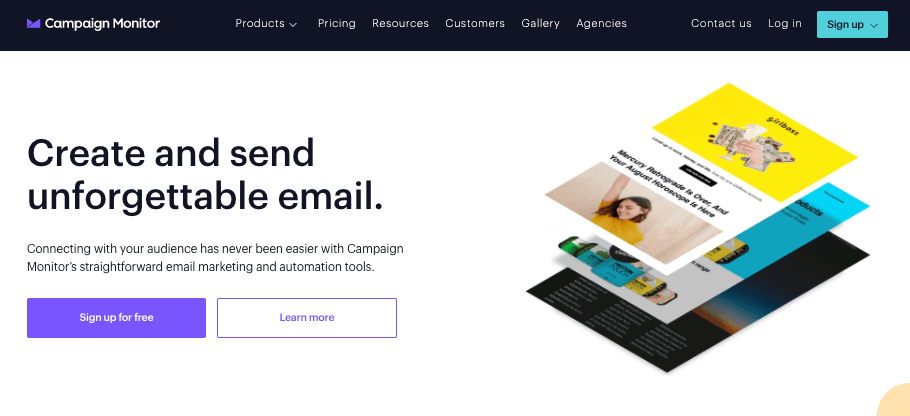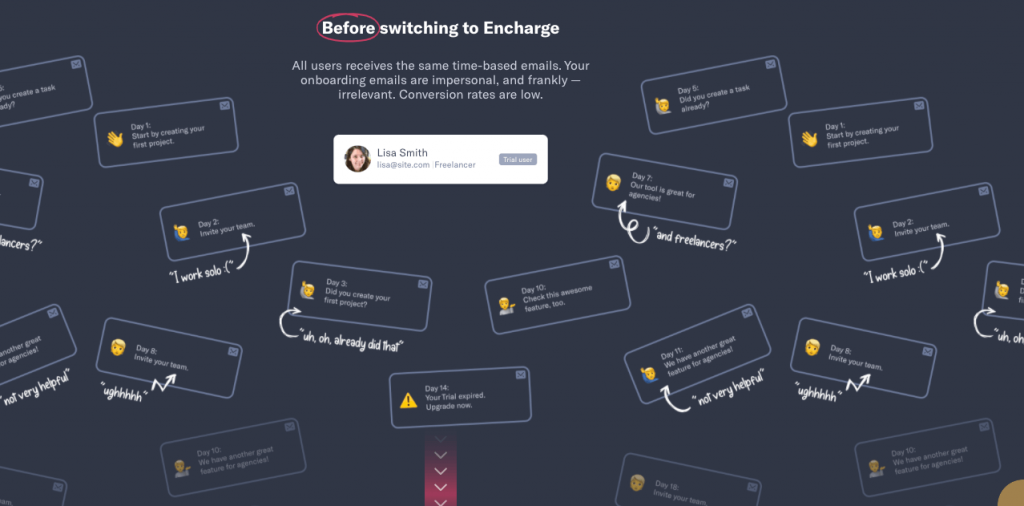Segmentation is the super power of marketing automation. Done correctly, you will not only be able to easily locate any lead throughout the customer journey but also hit them with relevant messaging.
As always, some platforms do it a lot better than others. This area, however, is a bit more complicated than rating platforms as they all tend to have mixed features and price points. In this issue, I’ll cover the various types of segmentation and how some of the top email marketing and marketing automation platforms handle them.
Also, don’t forget to listen to podcast episode #8 to get more insight on the importance of segmentation and using it to place the right message in front of the right audience for higher ROI on your marketing campaigns.
Within Lists – Industry Lagging

I’m surprised this functionality still exists as it is definitely the most outdated approach. Segmentation within lists means that all grouping of contacts takes place within the specific list that contact exists on.
For instance, if I had three lists and wanted to create a segment of females across each list, I would have to create three separate segments (one for each list). Furthermore, I would have to send 3 separate emails to each segment on each list.
To top it off, if a single contact exists on two of the three lists they will receive duplicate emails since the lists, in this setup, don’t talk to one another. Not to mention you’ll be paying for that single contact twice since you pay per contact per list.
There is absolutely no reason for this approach to still be an option, but some of the most used email marketing platforms still use this including:
Email Marketing
Email Marketing Automation
- Mailchimp (they call lists “Audiences” now)
Marketing Automation
- N/A
Across Lists – Industry Standard

If you’re going to offer (or mandate) lists in your marketing platform, the industry standard is to allow segments to be created across them. This means though you exist on a single list that doesn’t limit you from being included in a grouping that spans beyond that list.
This is where segmentation becomes truly dynamic as activities across all lists can be monitored and used for grouping contacts.
Usually, if done correctly, you will only be charged once for a contact that exists on multiple lists. You have to watch this, however, as most email marketing platforms do NOT take this approach and will charge you multiple times for the same contact on multiple lists.
Platforms that use this type of segmentation, however, will not send duplicate emails to contacts.
If you’re looking to get started with more effective segmentation, I recommend at least starting with one of the tools listed below:
Email Marketing
Email Marketing Automation
- GetResponse (will charge you multiple times for contacts on multiple lists)
- Klaviyo
- Drip (lists are called “Campaigns”)
- SendInBlue (segments are called “Dynamic Lists”)
- MailerLite (lists are called “Groups”)
Marketing Automation
No Lists – Industry Future?

Why do you need lists anyway? This is a very good question to ask as we look into platforms that don’t use any lists as a requirement for contacts to exist. In fact, you could argue lists pose as a pointless means of grouping if you can perform segmentation across them (I’ll explain why it matters later in this article).
Most pure marketing automation platforms do not use lists as a means of mandating contacts be subscribed to them. Instead, they have a general contact database and all segmentation and grouping exists across that single database.
This is, hands down, the most powerful and effective approach to segmentation I’ve experienced. Coupled with a strong segment builder, you have absolutely no limitations and maximum flexibility. I would definitely like to see more marketing automation platforms take this approach moving forward. Current platforms include:
Email Marketing
- N/A
Email Marketing Automation
- N/A
Marketing Automation
- Infusionsoft (segments are called “Saved Searches”)
- Ontraport (segments are called “Groups”)
- Hubspot (segments are called “Active Lists”)
- Encharge.io (dedicated for SaaS products)
Other Considerations
Segmented Sending
I mentioned earlier that there is no point of lists for platforms that allow segmentation across them. The exception is when it comes to sending emails. Some platforms make it easier to send to lists than to send to segments.
This makes it harder to teach people to rely on segmentation when creating and sending to lists is made much easier.
Managing Segments
How easy is it to find segments? Some of the platforms listed above make this very difficult. Believe it or not, there are platforms that don’t even have a menu item entitled “Segments” without clicking through various options.
If you are a true marketing automation platform, you have to make the creation and management of segments as simple as possible if you want the wider audience to adapt to it. The easier segmentation is made, the more users will be about to get out of your software.
Handling Unsubscribes
This is where things get really fuzzy quickly. Especially if you’re using lists. The question becomes… “when someone clicks unsubscribe, what lists are they removed from” ? It’s a clean and easy answer for platforms whose segmentation exists only within lists (the first group I mentioned).
However, when you offer segmentation across all lists it’s not as straightforward. In fact, no platform handles this case the same way (which can make it even more confusing). One could use this consideration and come to the defense of tools like Mailchimp that only allow segmentation within lists as it makes handling unsubscribes easier.
The other option is to get rid of lists and create a means of handling unsubscribes global to your database as Ontraport and Hubspot have done.
Automating Entry and Exit
Many of the platforms listed allow you to create segments and have them update automatically when a contact matches the required criteria. However, very few of them allow the entry and exit of those segments to serve as triggers to automation.
The ones that do offer that much more power than their competitors (I know Ontraport and Hubspot offer this at a minimum). It’s actually one of the features I find missing the most from marketing automation platforms.
Why give me the ability to segment without the ability to automate based on a contact entering and/or exiting those same segments? What a tease.
Segmenting Criteria
The boils down to two options…recency and frequency.
Segmenting based on recency provides a means of selecting contacts that have done a particular action within a specified window of time. “Last open date is…” or “Last purchase date is”. This allows you to pull up time-based segmentation and is pretty standard in all platforms to date.
Segmentation on frequency, however, is where you start to see a gap. Counting how many times something has taken place is a criteria you won’t easily find in most tools. Those that offer it, combined with recency criteria (Klayvio) offer an extremely unique targeting experience.
Bonus – Segment Performance Tracking
One feature I’d love for companies to add is the ability to track performance of a given segment. All reporting data, as of now, is relative to the email sent instead of the segment that received it. This would allow users to see how their segments are performing per a specific goal/result/outcome.
Imagine being able to easily identify your highest grossing segments. Not contacts, because contacts can enter and exit segments. But measuring the effectiveness of the criteria that achieves the outcome. The closest I’ve seen is deal reporting that shows what stage a deal was won or lost on. Same thing with segments…which segment was the contact a part of when they became a customer (or any other outcome)?
A person can only dream…
As always, there are more tools to mention and more considerations to cover but I think you get the main idea with what has been mentioned here. Segmentation is the future of messaging and a lot of these platforms need to upgrade their offering in how they handle it.
If you’re using a tool listed, or not, with great segmentation success I’d love to hear about it in the comments below.
